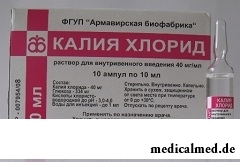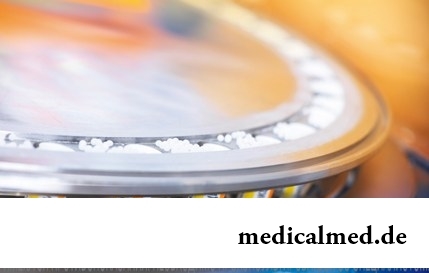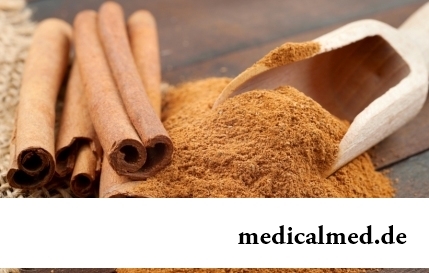





Potassium chloride
Application instruction:
 Potassium chloride – the drug used for completion of deficit of potassium in an organism.
Potassium chloride – the drug used for completion of deficit of potassium in an organism.
Form of release and structure
Potassium chloride is produced in the following dosage forms:
- Concentrate for preparation of solution for infusions 30, 40, 75, 150 mg/ml (on 5, 10 ml in ampoules with a knife ampoule, on 5, 10 ampoules in planimetric or plastic strip packagings (pallets), on 1 or 2 packagings in a cardboard pack or on 5, 10 ampoules in a cardboard pack; on 100, 200 ml in bottles for blood and blood substitutes, on 1 bottle in a cardboard pack, on 28 or 35 packs in a cardboard box);
- Concentrate for preparation of solution for infusions and intake of 40 mg/ml (in polymeric ampoules on 5, 10 ml, on 5 or 10 ampoules in a cardboard pack);
- Solution for intravenous administration of 40 mg/ml (on 10 ml in ampoules with a knife ampoule, on 5 or 10 ampoules in plastic strip packagings (pallets), on 1 or 2 pallets in a cardboard pack);
- Solution for intravenous administration and intake of 40 mg/ml (on 10 ml in ampoules with a knife ampoule, on 5 or 10 ampoules in plastic strip packagings (pallets), on 1 or 2 pallets in a cardboard pack or on 10 ampoules in a cardboard pack).
Active agent is a part of 1 ml of a concentrate for preparation of solution for infusions: potassium chloride – 30, 40, 75, 150 mg.
The structure of 1 ml of a concentrate for preparation of solution for infusions and intake, solution for intravenous administration and solution for intravenous administration and intake includes active agent: potassium chloride – 40 mg.
Indications to use
- Hypopotassemia (including against the background of long vomiting and/or diarrhea, a diabetes mellitus, therapy by some diuretics, hypotensive medicines, glucocorticosteroids);
- Bouveret's disease, glikozidny intoxication (treatment and prevention);
- Ectopic arrhythmias at patients with a myocardial infarction in the period of an acute current (treatment and prevention).
Contraindications
- Total atrioventricular block;
- Hyperpotassemia;
- Chronic renal failure;
- Adrenal insufficiency;
- Metabolic disturbances (a hypovolemia with a hyponatremia, acidosis);
- Simultaneous use with kaliysberegayushchy diuretics;
- Age up to 18 years (safety and efficiency of use of drug for this age group of patients is not established);
- Hypersensitivity to drug components.
Potassium chloride is applied with care at AV conductivity disturbances.
Before purpose of Potassium of chloride pregnant women should estimate a ratio advantage/risk for health of mother and a fruit. In need of use of drug during breastfeeding it is necessary to resolve an issue of its termination.
Route of administration and dosage
Potassium chloride is entered intravenously struyno, in need cases – intravenously kapelno in combination with 5% dextrose solution.
Depending on indications drug is appointed:
- The hypopotassemia which is followed by disturbances of a cordial rhythm: 4-5 times a day on 1-1,5 g (the dose is reduced after recovery of a cordial rhythm);
- Glikozidny intoxication: on 2-3 g a day, in hard cases increase in a daily dose up to 5 g is possible;
- Attacks of a Bouveret's disease (stopping): in the first day of use – 8-12 g, reduce further a daily dose to 3-6 g;
- The heavy intoxications demanding bystry elimination of the pathological phenomena and also persistent vomiting: intravenous administration of solution of Potassium of chloride of 40 mg/ml in 40% glucose solution. 50 ml of solution should be parted with water for injections by 10 times (up to the volume of 500 ml) and to enter kapelno (20-30 drops a minute). Also the drug can be administered intravenously kapelno at the rate of 2,5 g in 500 ml of 5% of solution of a dextrose or 0,9% of solution of sodium of chloride;
- Ectopic arrhythmias at a myocardial infarction (treatment and prevention): apply the polarizing mix – chloride Potassium solution in 5-10% dextrose solution (with addition of insulin of short action, in calculation of 1 PIECE on 3-4 g of a dry dextrose).
Side effects
During performing therapy development of the following disturbances is possible:
- Cardiovascular system: arrhythmias, lowering of arterial pressure, blockade or cardiac standstill;
- Nervous system: muscular weakness, paresthesias, confusion of consciousness;
- Others: allergic reactions, hyperpotassemia.
Special instructions
During therapy it is necessary to control the electrocardiogram, the maintenance of potassium ions in blood serum, at treatment of a hypopotassemia – an acid-base state.
At observance of a diet with high content of sodium removal of potassium from an organism increases.
At use of Potassium of chloride it is necessary to consider that the hyperpotassemia leading to a lethal outcome can proceed asymptomatically and quickly develop.
Medicinal interaction
Potassium chloride pharmaceutical is compatible to solutions of cardiac glycosides (improves their portability).
At simultaneous use with beta adrenoblockers, cyclosporine, kaliysberegayushchy diuretics, heparin, inhibitors of an angiotensin-converting enzyme, non-steroidal anti-inflammatory drugs strengthening of risk of development of a hyperpotassemia is possible.
Potassium chloride strengthens negative batmo-and dromotropic effect of antiarrhytmic drugs.
Terms and storage conditions
To store in the place, unavailable to children, at a temperature of 15-25 °C.
Period of validity:
- Concentrate for preparation of solution for infusions – 1 year;
- Solution for injections – 3 years.
Name of drug
Price
Drugstore
Potassium Chloride solution of 4% of amp of 10 ml No. 10, Biosynthesis (Penza)
37 rub.
 Network of the Moscow drugstores of IFC
Network of the Moscow drugstores of IFCPotassium chloride solution for инъ 4% 10 ml No. 10, the Slavic drugstore of Ltd company (г.Москва)
38 rub.
 Network of the Moscow drugstores of IFC
Network of the Moscow drugstores of IFCThe 74-year-old resident of Australia James Harrison became blood donor about 1000 times. It has a rare blood group which antibodies help to survive the newborn with a severe form of anemia. Thus, the Australian saved about two million children.

Popular joke that there are no healthy people, and is nedoobsledovanny, most of us considers an honest truth, and put that...
Section: Articles about health
The healthy nutrition is the invariable principle of health and good health for long years of the woman. Nevertheless, in a diet at each stage of life there are the features allowing to support an organism by those substances which are most necessary...
Section: Articles about health
Mushrooms - the surprising inhabitants of our planet having a set of wonderful qualities. Thanks to one of them, a mold mushroom of Penicillium notatum, the first natural antibiotic - penicillin was received nearly 80 years ago. The mankind is obliged to this opening by millions of saved lives....
Section: Articles about health
The name of this disease precisely reflects the problem reason: it consists in the bra fastener pressure upon a certain zone...
Section: Articles about health
According to doctors, more than a half of men of 25-50 years suffer from frustration of the urinogenital sphere, but the minority sees a doctor from them. And in vain - even the insignificant discomfort in the field of generative organs can serve as a symptom of an illness fraught heavy посл...
Section: Articles about health
The thought that the mass of their body is too big at least once in life visits from 80 to 95% of women. Many women are so obsessed with this idea that constantly try all new and new ways of weight reduction. A considerable part of these techniques is ineffective, and some in general are unsafe for health....
Section: Articles about health
For the help to doctors in the choice of optimal solutions for treatment of various diseases the Cochrane scientific organization (Cochrane) will see off совм...
Section: Articles about health
The summer of this year in Russia was very ambiguous. Regions suffered from a merciless heat, from pouring rains, the hail from time to time dropped out, then there was again a heat which alternated with rainfall again. Many people suffer from such sharp changes of weather...
Section: Articles about health
New year, wedding, birthday, office party – an occasion to drink at the Russian person will always be. How to reduce a negative impact of alcohol by an organism and to avoid a condition of strong intoxication? The most correct council – to refuse the use of alcoholic drinks. Council is true, but not always feasible. We offer several advice which will help you in cases when it is impossible to avoid alcohol intake....
Section: Articles about health
Reactive pancreatitis - the disease which is characterized by inflammatory process in a pancreas which arises more often everything...
Section: Articles about health
The naturopathy sometimes moves as the new direction of medicine, something like fashionable hobby, and there is nothing farther from the truth. This most ancient direction, the word "naturopathy" is translated as "treatment by the nature", and, no doubt, treatment приро...
Section: Articles about health
The endocrine system carries out extremely important role in a human body, practically all processes of life activity are regulated by it. Closed glands (hemadens) produce special biologically active agents – hormones which then get to a blood channel and are transferred to bodies addressees, or as they are called still, to target organs. Frustration of this mechanism are fraught with development of serious chronic pathologies....
Section: Articles about health
Venereal diseases in medicine are called the infections which are transmitted preferential sexually, now they are so...
Section: Articles about health
Ayurveda - the most ancient tselitelsky practice which came to us from India. It represents the doctrine about maintenance of physical, psychological and moral health of the person by means of the complex of procedures including a diet, cleaning of an organism, respiratory упр...
Section: Articles about health
The saying "the rich do not know how the other half lives" is known to all. In a broad sense it is that we can not always understand the person whose features of a state are unknown to us. If with physiological characters of diseases the situation is more or less clearly (having noticed them, we realize that to the person nezdorovitsya), then with symptoms of the illnesses affecting the mental sphere everything is much more difficult. Not absolutely usual behavior is quite often perceived surrounding as a ridiculous eccentricity, or that much ху...
Section: Articles about health
The popular expression "run from a heart attack" became the motto of the people supporting active lifestyle. Moreover, run became peculiar...
Section: Articles about health
The person, as well as all other beings living on our planet feels weather changing. It is the normal meteosensitivity which is not causing to healthy people of special troubles. Meteodependence, on the contrary, is morbid condition, характеризующимс...
Section: Articles about health
No, probably, the person who would not have cold. Cold, cough, a headache – these symptoms are known to everyone. The peak of catarrhal diseases is the share of fall. SARS already came to schools and kindergartens, flu slowly makes the way to the cities, in a word, winter close!...
Section: Articles about health
The climax, or menopause is the normal process of the termination of genital function of the woman which is followed serious hormonal...
Section: Articles about health
Women quite often suffer from complexes concerning the sizes of the bust. Strangely enough, not too modest, and excessively curvy shapes become the reason of sincere discomfort sometimes. Except psychological problems, a big bust sometimes with...
Section: Articles about health
History of use of an anesthesia during operations contains more than 160 years. Annually in the world hundreds of thousands of surgical interventions during which to patients the substances immersing them in a dream and saving from pain are entered are carried out. Using an anesthesia many myths and delusions are still connected. It is worth getting acquainted with the most widespread of them....
Section: Articles about health
All are familiar with cold, and practically everyone believes that he has sufficient knowledge and experience that correctly to treat it. N...
Section: Articles about health
According to data of World Health Organization, the cataract is diagnosed almost for 7% of the population of Earth. The statistics of incidence is considered not full as at an initial stage the illness, as a rule, does not cause to the person of special inconveniences, and many having got sick...
Section: Articles about health
Each woman has preferences in the field of use of those goods which help us to look good, feel young and effective. Besides: selection process of favourite perfume, shampoo or decorative cosmetics already lightens the mood and serves as a peculiar stress medicine. Happens very offensively when the acquired perfumery and cosmetic products not only do not meet our expectations, but also becomes the reason of problems with health. Sources неприятн...
Section: Articles about health
The majority of gynecologic diseases prove three main signs, each of which speaks about need to the visa...
Section: Articles about health
What is in our understanding weeds? It plants which are considered to be suitable only for compost pits and feeding of animals. Meanwhile, among the weeds growing literally under legs it is possible to find the mass of the officinal herbs possessing invaluable Paul...
Section: Articles about health
The stroke is one of the most widespread diseases of the person, annually in the world about 6 million cases of this pathology are registered. According to medical statistics, strokes occur almost three times more often than myocardial infarctions. The disease belongs to heavy, and has an unfavourable result: the lethality reaches 40% among women and 25% among men. A considerable part of the patients who endured a stroke cannot be recovered completely. We suggest readers to examine...
Section: Articles about health
